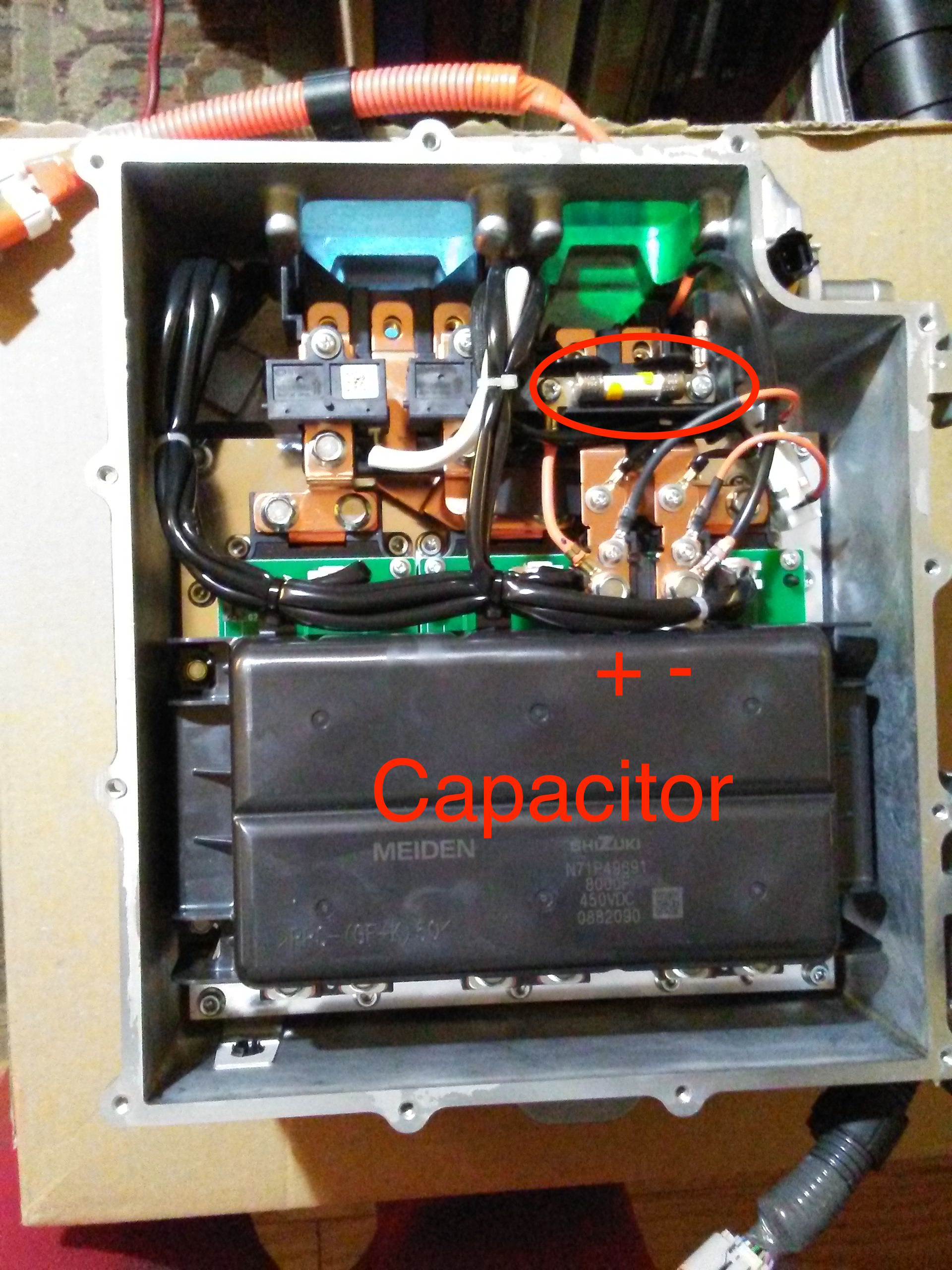P1A15 is High-Voltage System Error #1
Description of how the system operates:
The high-voltage circuit activation and shutdown are controlled by the EV-ECU. The EV-ECU also monitors the voltage of the smoothing condenser [the big *** capacitor] in the EMCU via the CAN communication.
How does this code get set?
If the charging time of the smoothing condenser in the EMCU exceeds a specified time, the diagnosis code No. P1A15 will be set. That is to say, it is taking too long for the capacitor to charge up to the full level, which is equal to the voltage of the pack.
Probable Causes in the service manual include:
Damaged wiring harness or connector(s)
Malfunction of the high-voltage fuse No.1 (Main, 280A) (inside the main battery assembly, accessible)
Malfunction of the main battery assembly (possibly damaged contacts of main relays, aka contactors)
Malfunction of the EMCU
In your case another reason could be that the Aux battery was disconnected/loose at the negative terminal, and the 12V signals to the coils of the Main Contactors was interrupted, which caused the contactors to open or chatter. This caused the slow charging of the big Capacitor in the MCU. This could have caused arcing and sparking and debris buildup on the contact points such that now the car can't get to READY.
Code P1AE6 is for an EEPROM Error in the Battery Monitoring Unit, if the BMU detects an error P1A51 then it sends a message to the EV-ECU over the CAN bus. The P1A51 code is thrown if the Aux Battery negative terminal is disconnected before the BMU has time to write data to the EEPROM after the key is turned to OFF.
"When the electric motor switch is turned in the LOCK (OFF) position, the BMU should execute the finishing process for several seconds. When the battery cable is disconnected from the auxiliary battery (-) terminal during the BMU finishing process, the BMU learning value could be deleted."
The lesson here is that the 12V Aux battery is very important for operation of the car, and much care must be taken to ensure no loose connections, especially the negative terminal. i always remove the negative terminal first, then the positive terminal, and always with the key out of the ignition switch.

























